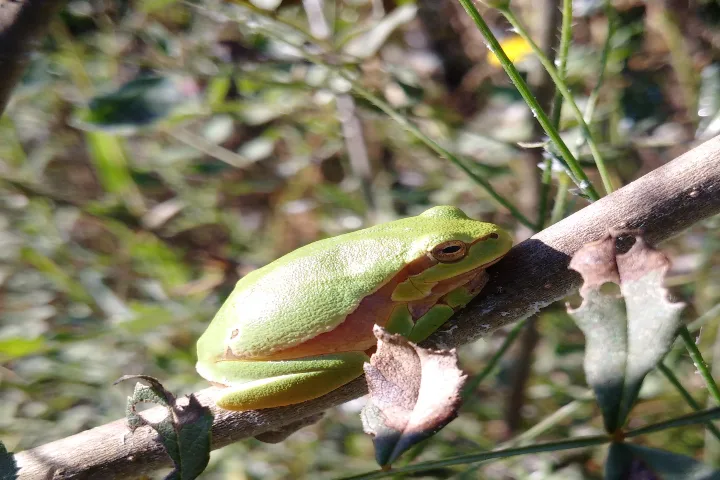

Conservation efforts in Switzerland helped the population of European Tree Frog increase substantially (Pic. Courtesy Twitter/@FrogValkovR)
Encouraging news about wildlife is few and far between. When it came to light that Switzerland had reversed the decline of more than half of its endangered frogs, newts and toads in one area, it was welcomed by one and all
A report in bbc.com said the region where this happened was the northerly canton of Aargau, where the numbers of these amphibians shot up when hundreds of new ponds were dug. Among the species, the number of European tree frogs had increased in large numbers according to the researchers.
Having tasted success, conservationists hoped that this simple and productive method would be adopted by others too.
What makes this increase significant is that across the planet the population of amphibians has plummeted. This is attributed to loss of habitat, rapid expansion of roads, urbanisation, invasive species and diseases.
In 1999, the people of Aargau seized on the decline in amphibian population, in particular, the European tree frog, decided to go in for mass conservation efforts. Over 20 years, Government, non-profit organisations, owners of land and volunteers built 422 ponds spread in five regions of the canton. The reason being older ponds were not ideal habitats because of the dearth of space, thick and dense vegetation and large number of predators. New ponds provided a lifeline for the amphibians.
Of the eight endangered species, 52% increased their regional populations and 32% were stabilised.
Dr. Helen Moor, the lead author of the study — published in the Proceedings of the National Academy of Sciences — informed BBC News that she was excited to see “such a clear increase” in numbers considering the simplicity of the solution. “Species will come, they will settle and start using the space if you offer it to them,” she remarked.
The tiny European tree frog was the most benefited species from this effort. Requiring shallow ponds created on floodplains by meandering rivers, this species started vanishing when their habitat disappeared.
Like the United Kingdom, Switzerland has high population density with extensive rail and road networks while non-urban areas are farmed extensively, informed Moor. “Habitat loss is one of the main problems, and just by addressing that we could see the difference it made, and begin the recovery of these species,” she said.
In 1999 European tree frog was found in 16 sites and in 2019 it was thriving in 77.
Monitoring of the ponds and their management will continue. This includes removal of vegetation and also predator larvae that prey on tadpoles.
Summing up the study, Dr. Moor said: “The key message is that it pays to do something, even if it feels overwhelming.”
Taiwan's military is prioritising combat readiness as a key aspect of deterrence due to escalating…
Calling for an increase in the speed of development, Prime Minister Narendra Modi said on…
The Scottish Government has reaffirmed its commitment to supporting religious freedom and human rights for…
Tara Chand Baloch, the President of the Baloch American Congress and a former Cabinet minister…
In a groundbreaking study, researchers from McGill University have identified nine biological markers in the…
India, in a firm and unequivocal statement at the United Nations Security Council (UNSC), accused…